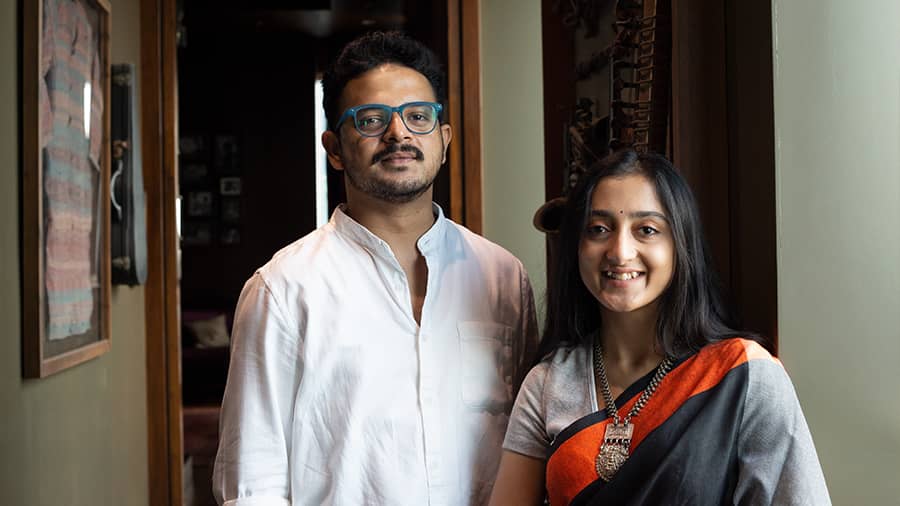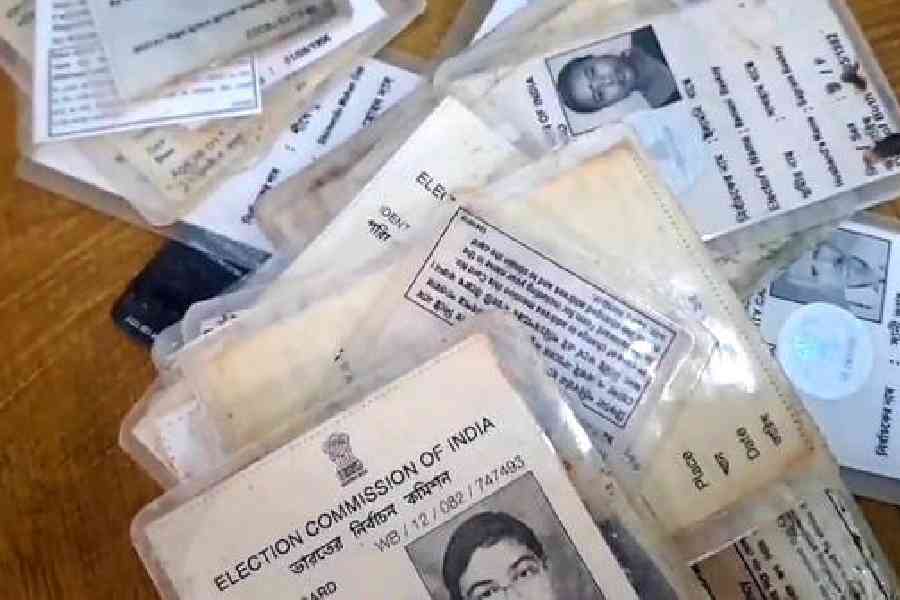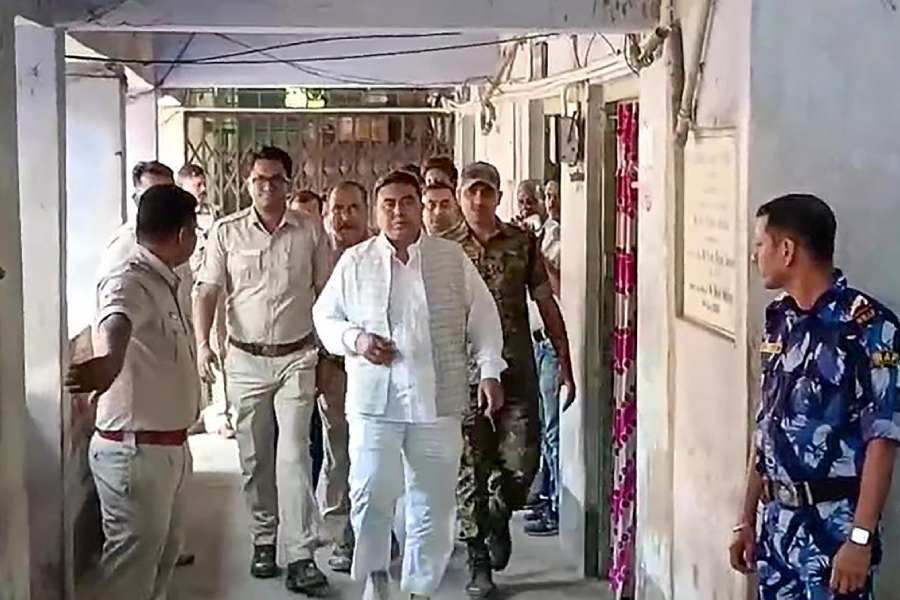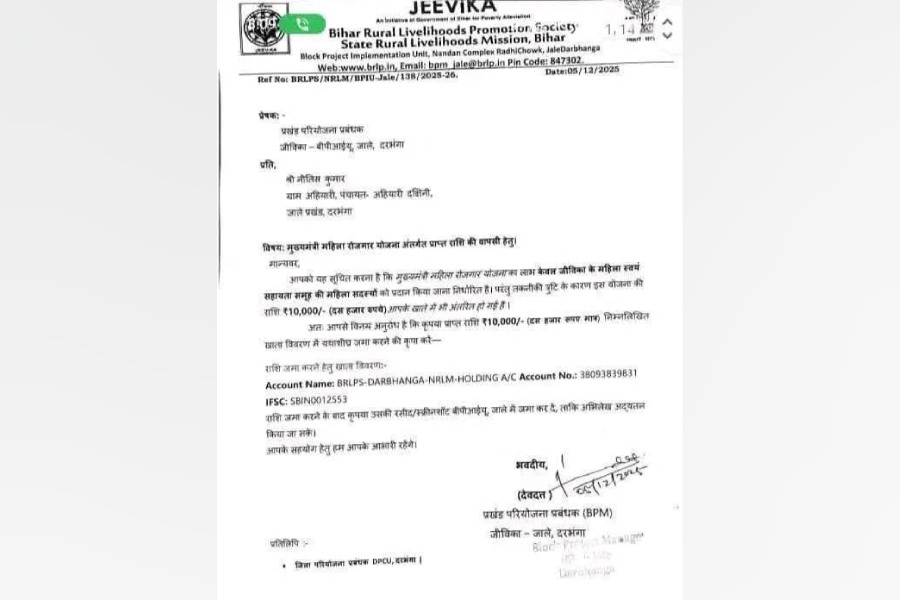Anirban Bhattacharya made waves with the web series Mandaar, one of the finest screen adaptations of Shakespeare ever. As such, his debut directorial feature is something one is looking forward to with high hopes. What makes it even more interesting is that it is based on a play by Badal Sircar, an iconoclastic playwright whose works haven’t made it to the big screen as much as they should. Here are excerpts from a long chat with Anirban on Ballabhpurer Roopkotha, which released at cinemas today.
The genesis of Ballabhpurer Roopkotha
Anirban Bhattacharya: After the success of Mandaar, my producers asked me to direct for the big screen. There were a lot of stories that came to my mind. We came up with four or five ideas and my producers chose Ballabhpurer Roopkotha. We have been through a dark phase. The memory of the pandemic, the sense of loss and grief are still fresh. Keeping that in mind, this is a light and happy film that everyone can enjoy. A fun film. An honest story. If the audience is looking for an honest film, you should definitely watch this.
The one idea that illustrates why you wanted to make this film
Anirban Bhattacharya: A dialogue which is there in the trailer and appears twice in the film. ‘Ak golpo hajar bar bolle, sheta ar ak golpo thake na, palte palte jaye manusher jiboner moton.’ (If a story is told a thousand times, it no longer remains a ‘story’, it starts to change like human life itself).
On horror comedies
Anirban Bhattacharya: I have always been extremely fond of horror comedies and satires. This particular genre has attracted many Bengali filmmakers but there is so much more that can be explored. I love watching them. My favourite is Stree and Goynar Baksho. Ballabhpurer Roopkotha is light-hearted and at the same time loaded with plenty of surprises.
OTT versus film
Anirban Bhattacharya: Mandaar was written for the medium – OTT. The story developed keeping in mind the five episodes. OTT is a very powerful medium to tell stories but I feel it is fast losing its power because there’s a lot of content and most of it is shallow. It no longer commands that respect. You can eat only as per your appetite. OTT seems hell-bent on force feeding you unnecessarily. Yes, people are definitely watching. But how long? We know Netflix’s subscription volume has gone down. I think we should slow down and take a breather. It’s almost like killing the golden goose. In terms of difference, I think it is just the frame speed. Web series are 25fps (frame speed) and films are 24fps.
The influence of theatre
Whatever I have achieved is because of theatre. However, I don’t see theatre and films as two different things. Of course, they are different in terms of the medium. But I don’t consciously incorporate anything from theatre to cinema or vice versa. I think they are linked with each other. I can’t really differentiate. Though they are different in form, I bring the same craft and effort to both mediums.
Your childhood
I was born in Midnapore town. It was a different world. There were vast open spaces, playgrounds. I used to love playing. Though I was not very studious, I never failed in any class. I spent my childhood mostly playing in the fields, ghats and river banks. The place has changed beyond recognition. I have good memories of my childhood.
Films were never a big part of life when I was a child. There was a cinema hall named Mohua. I remember watching King Kong, Godzilla. I enjoyed those a lot. We had two TV channels, DD Bangla and Metro. In the summer vacations a television festival, Chhuti Chhuti, used to be telecast. Cartoons, children’s films. I watched Joi Baba Felunath, Hirak Rajar Deshe, Sonar Kella on TV. It was only later that unnecessary content flooded television. Though I belonged to a conservative family, I received the right education, be it books or films, at the right time. I consumed the right content at the right time and knew instinctively what was good and what wasn’t.

Satyam Bhattacharya and Surangana Bandopadhyay star in Ballabhpurer Roopkotha. Photograph by Supratik Sur Roy
The technical aspects of filmmaking
If you are making a film, you have to be aware of the technical stuff and logistics. Cinema is dependent on technology. As an actor, I do everything with my own eyes, my body and my voice. But filmmaking needs a lot of technical assistance. When I was first asked to direct a film, I said no because I didn’t have much knowledge about the technical aspects.
I learnt on the job. It was not possible for me to stop my acting career and enrol in a film school. Also, I read regularly, watched YouTube masterclasses, StudioBinder, Pinterest. My cinematographer, Soumik Halder, gave me books from the American Cinematography Association. I got to know camera lenses, lights, editing, colour correction. Shooting Ballabhpurer Roopkotha was part of the learning process.
Adapting from a play or a literary piece
A play is written for the ‘stage’. I have to take the play and place it in the real world. Whoever writes a play does so keeping the ‘stage’ in mind. We shift it from the stage to the real world. Primarily, I just shift positions.
For example, consider a scene: three creditors visit Raja Bhupati’s house. As soon as Raja Bhupati sees them, he runs away. In the play, the person (Raja) is on the stage, he runs and leaves the stage. In the film we have to show ‘where’ the Raja has gone. In the next scene, Bhupati’s servant, Monohor, says, ‘Apnara boshun, ami Raja babu ke deke anchi.’ (Please wait, let me call Raja babu.) Monohor too leaves the stage. We see only three characters on stage now. In the film we had to show Monohor leaving the room and going to the room where the Raja is hiding. We had to write a separate dialogue scene for that because it does not exist in the play. After that we went back to the existing scene.
Mandaar was easier to adapt because we had taken only the crux of the story. We designed the story and the scenes ourselves. Ballabhpurer Roopkotha was more challenging because we have taken the whole play.
On Badal Sircar
I never met Badal Sircar in person. I did watch his plays, though not many were staged when I first came to Kolkata. I have read almost all his writings. As a playwright, theatre personality and philosopher, Badal Sircar is huge. This play is not enough to get an idea of his contribution.
I would like to share one incident. Badal Sircar enrolled himself in the Comparative Literature course at Jadavpur University at a much-advanced age. He was by then famous as a playwright. Sankha Ghosh, the poet, used to teach at Jadavpur University. Seeing Badal Sircar sitting in the class, Sankha Ghosh left. ‘Badal babu class e thakle ami porate parbo na.’ (How can I teach when Badal Sircar is in the class?)
Struggles as an actor and how they shaped your storytelling
I think my struggle was basically the same as other actors. You have to keep your eyes open, your mind and soul welcoming of every experience. You get to know people. That is very important in theatre and cinema. Politics, mise-en-scene come with people. That is what drives me to tell stories. Interacting with, seeing and observing people are important for me. This is as much a motivating factor as it is an exercise to sharpen my craft. Working in films as an actor has definitely shaped my directorial vision. I find it extremely comfortable and easy to direct my actors.
Being an actor and director
I can’t act well when I am directing. I am a better actor when I am not directing. I can’t keep my mind on two things simultaneously. This is why I decided not to act in Ballabhpurer Roopkotha. In Mandaar, I had thought of doing the same. Unfortunately, none of the auditions were up to the mark. It is difficult to act and direct at the same time. Usually my associate director is behind the camera but I have to go back to the monitor to satisfy myself.
The casting process
The character is my priority. The second thing I look for is the actor’s capability. I do a lot of auditions, screen tests and workshops. Then there’s the question of my comfort level with the actor. I always write the script and then look for a suitable actor. With Ballabhpurer Roopkotha, the advantage was that the play existed already. In the case of Mandaar, I wrote the script first and then thought of casting Debashish (Mondal).
Surangana (Bandopadhyay) and Satyam (Bhattacharya) are good actors and superb in what they do. Satyam was one of the main assistant directors in Mandaar. He is a handsome young man, extremely good-looking. I wanted his character to look like a Bengali man in his 60s and 70s. He has a small paunch, a double chin but is very sweet. He fit the character to a T, apart from the fact that he is a fantastic actor. Surangana gives an extremely pretty vibe. She looks like an angel in the whole film.
On set designing
Mandaar was shot in real locations. In Ballabhpurer Roopkotha, we found a house which is perfect for the story. It was designed later by our art director Subrata Barik. He is quite wonderful. I design my set keeping in mind that it should enable the narrative to flow unhindered. That is my priority. Anything extra or unwanted should not disturb it. You should narrate your story truthfully.
The visual science and dimensions are different in theatre and cinema. One is stage images, the other visual images. In theatre we get the stage ready, and in films we take the camera to the location.
On contemporary Bengali cinema
We are only chasing money. We are trying to be someone we are not. We are not talking about our roots. We don’t have enough confidence in our language and culture. I think we should be a little more truthful about our society when it comes to filmmaking. Our culture is not only Rabindranath Tagore and Satyajit Ray. There is a world beyond that. There are migrants, driving a taxi in your city or delivering food. They are part of your culture and city. Are we talking about them? We are mimicking others. This has to change. We are trying to put on a dress which doesn’t fit us.










